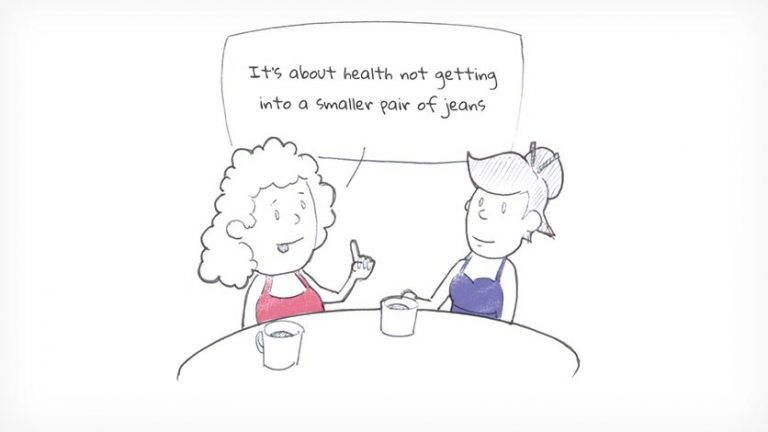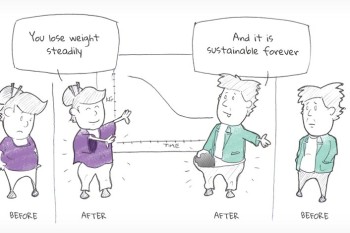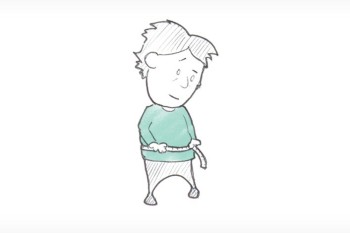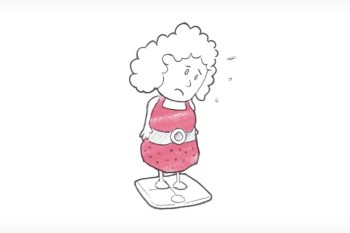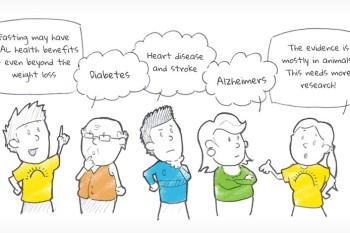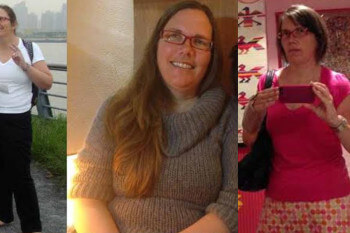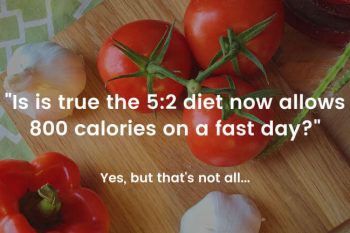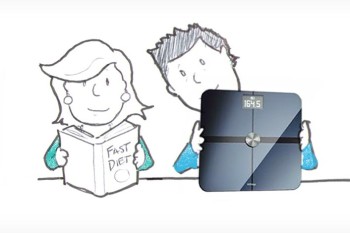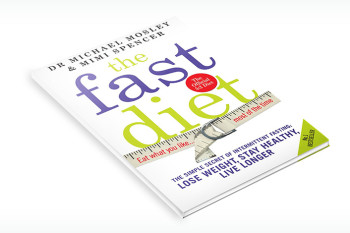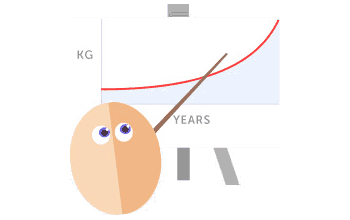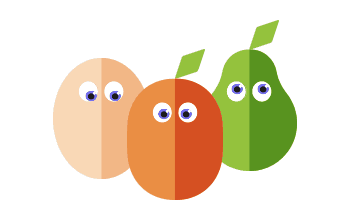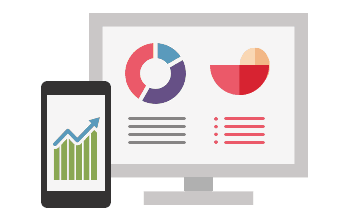Setting a weight loss target can be surprisingly difficult. Here are some questions you should answer when thinking about an appropriate target:
-
What is a healthy weight for you?
-
What do you think is your ideal weight?
-
How will you look at this weight?
-
How will you feel at this weight?
-
Can you reach this weight and maintain it without excessive fasting?
-
Would a target weight range be more appropriate than a fixed weight?
This topic has been much discussed at the FastDay forum. Here are some of our thoughts on setting a target weight.
What is a healthy weight for you?
Body Mass Index (BMI)
To get an idea of what your healthy weight might be, you could start by calculating what you will weigh when your body mass index (BMI) is under 25. To do this easily, take your height in metres and multiply it by itself and then by 25 (e.g. 1.64 x 1.64 x 25 = 67.24). This gives you the weight in kg that is the point at which you are considered overweight. If you then multiply by 18.5 instead of 25 you get the point at which you are considered underweight. You will notice that the range of healthy weights (BMI 18 to 25) is rather large (in the case of a woman of height 1.64m, she could weigh anything between 49.75kg and 67.24kg, which is an enormous range). Where should you aim to be within this range? Statistically, a BMI of 22 seems to be associated with the best life expectancy, but statistics deals with averaging out huge populations and so a target of a BMI of 22 may not be the best for you! You need to consider your frame size, your age, how fit you are and your waist size when thinking about what your healthy weight will be.
BMI is used by doctors everywhere to assess whether someone is carrying a healthy amount of body fat, but it has many shortcomings:
1) BMI does not account for frame size. If you have large/heavy bones or small/light bones the BMI figures will not be right for you. To get an idea of your frame size, measure around your wrist at the narrowest point. Then use the table below to determine whether you have a small, medium or large frame. Choose the row that corresponds to your height and then look across to see what your wrist measurement would be for different frame sizes.
Height |
You have a small body frame if your wrist measures: |
You have a medium body frame if your wrist measures: |
You have a large body frame if your wrist measures: |
|---|---|---|---|
Women 5’2″ (157cm) and below |
less than 5.5 inches (139 mm) |
5.5–5.75″ (139–146 mm) |
more than 5.75″ (146 mm) |
Women between 5’2″ and 5’5″ (157–165 cm) |
less than 6″ (152 mm) |
6–6.25″ (152–158 mm) |
more than 6.25″ (158 mm) |
Women taller than 5’5″ (165 cm) |
less than 6.25″ (158 mm) |
6.25–6.5″ (158–165 mm) |
more than 6.5″ (165 mm) |
Men taller than 5’5″ (165 cm) |
5.5–6.5″ (139–165 mm) |
6.5–7.5″ (165–190 mm) |
more than 7.5″ (190 mm) |
If you have a large frame you can add 10% to the healthy BMI range or if a small frame you need to subtract 10% (e.g., if you are 1.64m tall with a large frame, then 1.64 x 1.64 x 25 = 67.24 + 6.72 = 73.96, so 73.96kg represents the top of healthy BMI range for you).
2) If you are very fit you will have more muscle than the average person so, again, your BMI will not reflect how much fat you are carrying and a high BMI may represent a healthy weight for you.
3) Your healthy weight increases slightly as you age. There is some scientific evidence that for people aged over 65 years it is better to have a slightly higher weight (BMI 24 to 27).
Perhaps then, BMI is not such a suitable guide to your healthy weight.
Waist size
As waist size is actually a much better measure of your health (as discussed in measuring success), why not set a target waist measurement rather than a target weight? Your target should be to get your waist to measure less than half of your height.
Body fat
If you have a way of measuring your body fat percentage (many modern weighing scales do this or you can buy a body fat monitor), then you could even set a body fat target. After all, whenever we discuss what we should weigh, we are really talking about how much fat we should be carrying (and how much muscle). The table below gives some ideas as to potential body fat targets. Again, in older individuals the target should be set a little higher.
Description |
Women |
Men |
|---|---|---|
Essential fat |
10–13% |
2–5% |
Athletes |
14–20% |
6–13% |
Fitness |
21–24% |
14–17% |
Average |
25–31% |
18–24% |
Obese |
32%+ |
25%+ |
What do you think is your ideal weight?
As mentioned above, the healthy weight range is rather large so when picking your target weight you will need to think about what would be your ideal weight. Your ideal weight should not be something unattainable though. You could use a weight that you have been before when you thought you looked and felt your best, perhaps in your early adulthood. The benefit of using this weight as your target is that it is far more personalized than using BMI, waist size or body fat. If you have been that weight before, then most likely you can be that weight again.
How will you look and feel at that weight?
It is important to be realistic when setting a target weight. It may be that if you were to attain what you think is your ‘ideal’ weight you would actually look too gaunt, you might feel too bony. If as you approach your target your friends and family start to mention how thin you are looking and asking if you are going to stop losing weight, do not dismiss their concerns. Ask them to take photos of you that show how you really look. You might be surprised that you look rather different in the photos than you do when you look at yourself in the mirror!
Can you reach this weight without excessive fasting?
It may be that your body has other ideas about what is your ideal weight and that to keep on losing weight you need to add more fast days or restrict your eating in some other way which you find is not sustainable. It is far more important to lose some weight and keep it off than to reach your target through heroic measures which you cannot sustain and then end up putting the weight back on. Remember that this is a Way of Eating for life, not just until you reach a certain target. Always ask yourself “can I eat this way for the rest of my life?” whenever you are considering adding an extra fast day or some other change. If you find you have to accept a higher target weight than you hoped for, above all remember that you have improved your health enormously by losing weight and that by continuing to fast you are continuing to bring health benefits.
Remind yourself of the health benefits of fasting
Would a target range be more appropriate than a fixed weight?
Our bodies vary in weight by quite a large amount day to day. The amount of water and fat in our bodies changes daily. Thus, when one day you weigh yourself and you find you have reached your target (well done you!), the next time you weigh it is likely you will be heavier or lighter. Do not panic! If you weigh 500g more than last week, it is probably just that today you have more water in your body. If you weigh 500g less you may be a little dehydrated. For the sake of your sanity, it is best to have in mind an upper and a lower limit on your weight rather than a fixed target. So, you may say that your target is 60kg, but you should rather say “I aim not to weigh more than 61 kg or less than 59kg”.
Read about Why the scales don’t tell the truth

